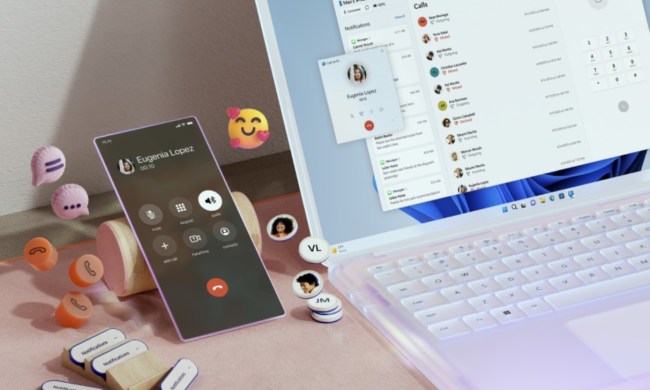“The PCV-W20 is a sleek and sexy system geared towards the casual computer user who wants to show off a little style.”
- Great design
- lots of features
- Flimsy DVD player tray
Summary
The Sony VAIO PCV-W20 is another system that falls into the lifestyle computing category with the likes of the Apple iMac and Gateway Profile systems. As with most of Sony’s products, the PCV W-20 tries to be unique and succeeds quite well at doing so albeit at the expense of some functionality. Although this system is not the fastest in its category, the features and design more than make up for any short comings. The PCV-W20 is a sleek and sexy system geared towards the casual computer user who wants to show off a little style. Those who purchase the PCV-W20 will be more than happy with their decision.
Introduction
The Sony VAIO W20 computer is a unique system in the sense that it is useful in ways other desktop systems are not. It’s peculiar size and design suggests that this system would be better suited to the kitchen or bedroom that in an office or work environment. Sony packs the W20 with more software and connectivity inputs than any system we have seen in this category. A cross between a laptop and a desktop computer, the PCV-W20 proves that great things do come in small packages.
Features and Design
We reviewed the W20’s predecessor a couple months ago on the site and while we loved the design, the power was very lacking for what the system should be capable of doing. Sony quickly pulled the W10 off store shelves after realizing this and replaced the W10 with the PCV-W20. The difference? The PCV-W20 now has a more robust CPU; an Intel P4 1.8 GHz versus the previous Intel Celeron running at 1.6 GHz.
The PCV-W20 sports a 15.3″ Widescreen WXGA (1280×768) LCD display which is integrated into the system very much the same way Apple’s iMac and Gateway’s Profile PC’s are. The PCV-W20 also comes with 512MB of DDR memory, a 60Gb Hard drive, a DVD/CDRW combo drive, and more input ports than you can imagine, including 2 PCMCIA expansion slots along side the systems USB 2.0, Fire Wire, modem and ethernet ports. What we were disappointed to find that it did not have built in slots for SmartMedia, MultiMedia or SecureDigital memory card formats. If they had wanted to make a true appliance out of this computer they should have added these.
If you pay attention closely to the design of the PCV-W20 you will quickly notice that Sony designed this system to be used in high traffic areas such as the kitchen or even the bedroom. The LCD Display is protected by a thick acrylic shield preventing any harm to the beautiful display. The mouse also has a thick rubber strip across the front of it to prevent any marking or heavy wear and tear.
When not in use, the keyboard flips up against the display covering half of the viewable area. The other half which is visible automatically switches to a clock or radio depending on which settings you use. We found this feature to be incredibly thoughtful on Sony’s behalf; giving purpose to the PCV-W20 while not in use is pure brilliance.
Setup and Use
Setting up the PCV-W20 is extremely easy. Plug in the mouse and power cable and then turn the system on. You will be prompted by Microsoft’s Windows XP Home Edition to enter your personal information, user names and passwords, and ISP connection information.
Sony has a plethora of in house software preloaded on the PCV-W20 which in our opinion works great in most aspects and adds to the overall feel and experience of the PCV-W20. Among the titles that you will get are; PictureGear Studio, DVgate, SonicStage, MovieShaker, Network Smart Capture and VAIO Media.
PictureGear is a comprehensive photographic sharing application and has four main aspects to it. Import Photos will let you transfer pictures from your digital camera onto the computer so that you can easily store them for future reference. The design of the program allows you to flow between its parts, but it has a launch screen that will allow you to choose what you want to do. Once the photos are on the computer you can do a number of different things with them. A slide show or a photo album are probably the two main features that people will use the most. You can export a slide show of your recent pictures that you took and then send them to your friends and family. You can also post your photo album directly from the program using Sony’s ImageStation website.
SonicStage is the built in music recording, organizing and playing suite that comes with the PCV W-20. It is very similar to Windows Media Player in the way it organizes music. It does not have all the skinning capabilities, but does offer us the same limited amount of recording formats. The standard is the same format that MiniDisc is stored in; ATRAC and does Windows Media formats as well. Unless you own a MiniDisc player than you will probably end up using something different. SonicStage looks great on the system and functions adequately; although does not have the ability to stream playlists off the internet ala Winamp or Window’s Media Player.
MovieShaker is a basic video editor that allows you to build a little movie from clips that you may have on your computer. If you already have a movie you can add transitions, text and narration. It was fairly easy to use, although I did not have a video source to capture from, I was able to do what you see above in a short amount of time. It would be a great program to use to capture video into if all you are looking to do is make short movies for families and friends. It is able to stand by itself against Apple’s iMovie. Don’t forget that Windows Media Maker, that I have already mentioned, comes standard with XP so at least with this machine you get TWO basic video editors choose from.
Performance
When looking over the following benchmarks, you will see that the Sony VAIO PCV-W20 performs average overall when compared to our reference systems. Where the PCV-W20 really hurts is in the graphics department making this system better suited to applications other than gaming.

Application performance is average and the Intel Pentium 4 1.8 GHz processor is a lot stronger than the previous models Intel Celeron 1.6 GHz CPU. Sony’s in house software performed adaquately while being tested.

The PCV-W20 comes preloaded with multiple multimedia applications suited for video editing, digital imaging and other multimedia projects. AMD might sell their 1.8 GHz processor as performing with 2.2 GHz performance but the PCV-W20 closely trails the AMD reference system. We feel that this benchmark would have the same result regardless of the system and is thus showing the raw processor speeds rather than overall system performance.


The PCV-W20 system comes equipped with a Samsung Spin Point SV0602H hard drive which has an ATA 100 interface and runs at 5400RPM. While we would have liked to have seen a higher performing drive, we can only assume that Sony chose this particular drive and speed to keep heat temperatures down due to the systems small enclosure. The PCV-W20’s hard drive performance edged out our reference system using the same ATA 100 interface and RPM speed and performed well above our ATA 66 7200RPM system as well.

The Sony VAIO PCV-W20 uses DDR PC2100 memory in its system. Our testing showed that the PCV-W20 performed better than our VIA KT266 test system running memory of comparable speed and even nipped on the heals of our Intel 850 reference system which sports CAS 2 PC800 RDRAM memory. While the PCV-W20’s DDR memory is running at a faster speed than the Intel 850 system, RDRAM memory is known to push more bandwidth due to its architecture.

Setup and Use Continued…
The PCV-W20 comes preloaded with a lot of 3rd party software including: Microsoft Works 7.0, Microsoft’s Age of Emipres 2.0, Inuitit Quicken 2003, Adobe Acrobatreader and Photoshop Elemnts trial edition, Apple Quicktime and RealOne Player. McAfee’s Security Center is also preinstalled but is more annoying than good with its constant pop-up messages and registration windows.
The hardware on the PCV-W20 really gives way to the design side rather than the functionality side. While the keyboard placement looks very good in the way it flips up against the screen, the restricted movement due to being attached to the system makes use very uncomfortable at first. It also would have been better if there were more travel in the keyboard keys, as it stands the keyboard feels a lot like a laptops despite its larger size.
We would have preferred a mouse with side buttons with added functionality simply because of the systems unique layout. We did notice that the DVD/CD-RW drive ejected a laptop style tray horizontally which means it could be easily damaged if bumped. A slot loading drive similar to the ones used in the VPR Matrix/Apple Powerbook laptops would have been a better choice.
The PCV-W20 performed average to in our benchmarking. Because the PCV-W20 uses integrated SiS 32MB shared video, its performance was a lot lower than if it were have a separate video adapter. In our video tests, the PCV-W20 scored 50% lower than Gateway’s Profile PC which uses an Nvidia GeForce2 MX 400 video card. In our CPU benchmarks, the PCV-W20 system either matched or trailed an AMD Athlon XP2200+ (1.8GHz) reference system, which is pretty good for a system of this type. Click on the “performance” tab to view all benchmarks.
Conclusion
The Sony VAIO PCV-W20 is another system that falls into the lifestyle computing category with the likes of the Apple iMac and Gateway Profile systems. As with most of Sony’s products, the PCV W-20 tries to be unique and succeeds quite well at doing so albeit at the expense of some functionality. Although this system is not the fastest in its category, the features and design more than make up for any short comings. The PCV-W20 is a sleek and sexy system geared towards the casual computer user who wants to show off a little style. Those who purchase the PCV-W20 will be more than happy with their decision.




